Section One - Introductory Concepts
Chapter 1 Introduction to Programmable Controllers
1-1 Definition
1-2 A Historical Background
1-3 Principles of Operation
1-4 PLCs Versus Other Types of Controls
1-5 PLC Product Application Ranges
1-6 Ladder Diagrams and the PLC
1-7 Advantages of PLCs
Chapter 2 Number Systems and Codes
2-1 Number Systems
2-2 Number Conversions
2-3 One's and Two's Complement
2-4 Binary Codes
2-5 Register Word Formats
Chapter 3 Logic Concepts
3-1 The Binary Concept
3-2 Logic Functions
3-3 Principles of Boolean Algebra and Logic
3-4 PLC Circuits and Logic Contact Symbology
Section Two - Components and Systems
Chapter 4 Processors, the Power Supply, and Programming Devices
4-1 Introduction
4-2 Processors
4-3 Processor Scan
4-4 Error Checking and Diagnostics
4-5 The System Power Supply
4-6 Programming Devices
Chapter 5 The Memory System and I/O Interaction
5-1 Memory Overview
5-2 Memory Types
5-3 Memory Structure and Capacity
5-4 Memory Organization and I/O Interaction
5-5 Configuring the PLC Memory—I/O Addressing
5-6 Summary of Memory, Scanning, and I/O Interaction
5-7 Memory Considerations
Chapter 6 The Discrete Input/Output System
6-1 Introduction to Discrete I/O Systems
6-2 I/O Rack Enclosures and Table Mapping
6-3 Remote I/O Systems
6-4 PLC Instructions for Discrete Inputs
6-5 Types of Discrete Inputs
6-6 PLC Instructions for Discrete Outputs
6-7 Discrete Outputs
6-8 Discrete Bypass/Control Stations
6-9 Interpreting I/O Specifications
6-10 Summary of Discrete I/O
Chapter 7 The Analog Input/Output System
7-1 Overview of Analog Input Signals
7-2 Instructions for Analog Input Modules
7-3 Analog Input Data Representation
7-4 Analog Input Data Handling
7-5 Analog Input Connections
7-6 Overview of Analog Output Signals
7-7 Instructions for Analog Output Modules
7-8 Analog Output Data Representation
7-9 Analog Output Data Handling
7-10 Analog Output Connections
7-11 Analog Output Bypass/Control Stations
Chapter 8 Special Function I/O and Serial Communication Interfacing
8-1 Introduction to Special I/O Modules
8-2 Special Discrete Interfaces
8-3 Special Analog, Temperature, and PID Interfaces
8-4 Positioning Interfaces
8-5 ASCII, Computer, and Network Interfaces
8-6 Fuzzy Logic Interfaces
8-7 Peripheral Interfacing
Section Three - PLC Programming
Chapter 9 Programming Languages
9-1 Introduction to Programming Languages
9-2 Types of PLC Languages
9-3 Ladder Diagram Format
9-4 Ladder Relay Instructions
9-5 Ladder Relay Programming
9-6 Timers and Counters
9-7 Timer Instructions
9-8 Counter Instructions
9-9 Program/Flow Control Instructions
9-10 Arithmetic Instructions
9-11 Data Manipulation Instructions
9-12 Data Transfer Instructions
9-13 Special Function Instructions
9-14 Network Communication Instructions
9-15 Boolean Mnemonics
Chapter 10 The IEC 1131 Standard and Programming Language
10-1 Introduction to the IEC 1131
10-2 IEC 1131-3 Programming Languages
10-3 Sequential Function Chart Programming
10-4 Types of Step Actions
10-5 IEC 1131-3 Software Systems
10-6 Summary
Chapter 11 System Programming and Implementation
11-1 Control Task Definition
11-2 Control Strategy
11-3 Implementation Guidelines
11-4 Program Organization and Implementation
11-5 Discrete I/O Control Programming
11-6 Analog I/O Control Programming
11-7 Short Programming Examples
Chapter 12 PLC System Documentation
12-1 Introduction to Documentation
12-2 Steps for Documentation
12-3 PLC Documentation Systems
12-4 Conclusion
Section Four - PLC Process Applications
Chapter 13 Data Measurements and Transducers
13-1 Basic Measurement Concepts
13-2 Interpreting Errors in Measurements
13-3 Transducer Measurements
13-4 Thermal Transducers
13-5 Displacement Transducers
13-6 Pressure Transducers
13-7 Flow Transducers
13-8 Vibration Transducers
13-9 Summary
Chapter 14 Process Responses and Transfer Functions
14-1 Process Control Basics
14-2 Control System Parameters
14-3 Process Dynamics
14-4 Laplace Transform Basics
14-5 Dead Time Responses in Laplace Form
14-6 Lag Responses in Laplace Form
Chapter 15 Process Controllers and Loop tuning
15-1 Introduction
15-2 Controller Actions
15-3 Discrete-Mode Controllers
15-4 Continuous-Mode Controllers
15-5 Proportional Controllers (PMode)
15-6 Integral Controllers (I Mode)
15-7 Proportional-Integral Controllers (PI Mode)
15-8 Derivative Controllers (D Mode)
15-9 Proportional-Derivative Controllers (PD Mode)
15-10 Proportional-Integral-Derivative Controllers (PID Mode)
15-11 Advanced Control Systems
15-12 Controller Loop Tuning
15-13 Summary
Section Five - Advanced PLC Topics and Networks
Chapter 16 Artificial Intelligence and PLC Systems
16-1 Introduction to AI Systems
16-2 Types of AI Systems
16-3 Organizational Structure of an AI System
16-4 Knowledge Representation
16-5 Knowledge Inference
16-6 AI Fault Diagnostics Application
Chapter 17 Fuzzy Logic
17-1 Introduction to Fuzzy Logic
17-2 History of Fuzzy Logic
17-3 Fuzzy Logic Operation
17-4 Fuzzy Logic Control Components
17-5 Fuzzy Logic Control Example
17-6 Fuzzy Logic Design Guidelines
Chapter 18 Local Area Networks
18-1 History of Local Area Networks
18-2 Principles of Local Area Networks
18-3 Network Topologies
18-4 Network Access Methods
18-5 Communication Media
18-6 Understanding Network Specifications
18-7 Network Protocols
18-8 Network Testing and Troubleshooting
18-9 Network Comparison and Selection Criteria
Chapter 19 I/O Bus Networks
19-1 Introduction to I/O Bus Networks
19-2 Types of I/O Bus Networks
19-3 Advantages of I/O Bus Networks
19-4 Device Bus Networks
19-5 Process Bus Networks
19-6 I/O Bus Installation and Wiring Connections
19-7 Summary of I/O Bus Networks
Section Six - Installation and Start-Up
Chapter 20 PLC Start-Up and Maintenance
20-1 PLC System Layout
20-2 Power Requirements and Safety Circuitry
20-3 Noise, Heat, and Voltage Requirements
20-4 I/O Installation, Wiring, and Precautions
20-5 PLC Start-Up and Checking Procedures
20-6 PLC System Maintenance
20-7 Troubleshooting the PLC System
Chapter 21 System Selection Guidelines
21-1 Introduction to PLC System Selection
21-2 PLC Sizes and Scopes of Applications
21-3 Process Control System Definition
21-4 Other Considerations
21-5 Summary
Appendices
Appendix A: Logic Symbols, Truth Tables, and Equivalent Ladder Logic Diagrams
Appendix B: ASCII Reference
Appendix C: Electrical Relay Diagram Symbols
Appendix D: P&ID Symbols
Appendix E: Equation of a Line and Number Tables
Appendix F: Abbreviations and Acronyms
Appendix G: Voltage-Current Laplace Transfer Function Relationships
Glossary
Index
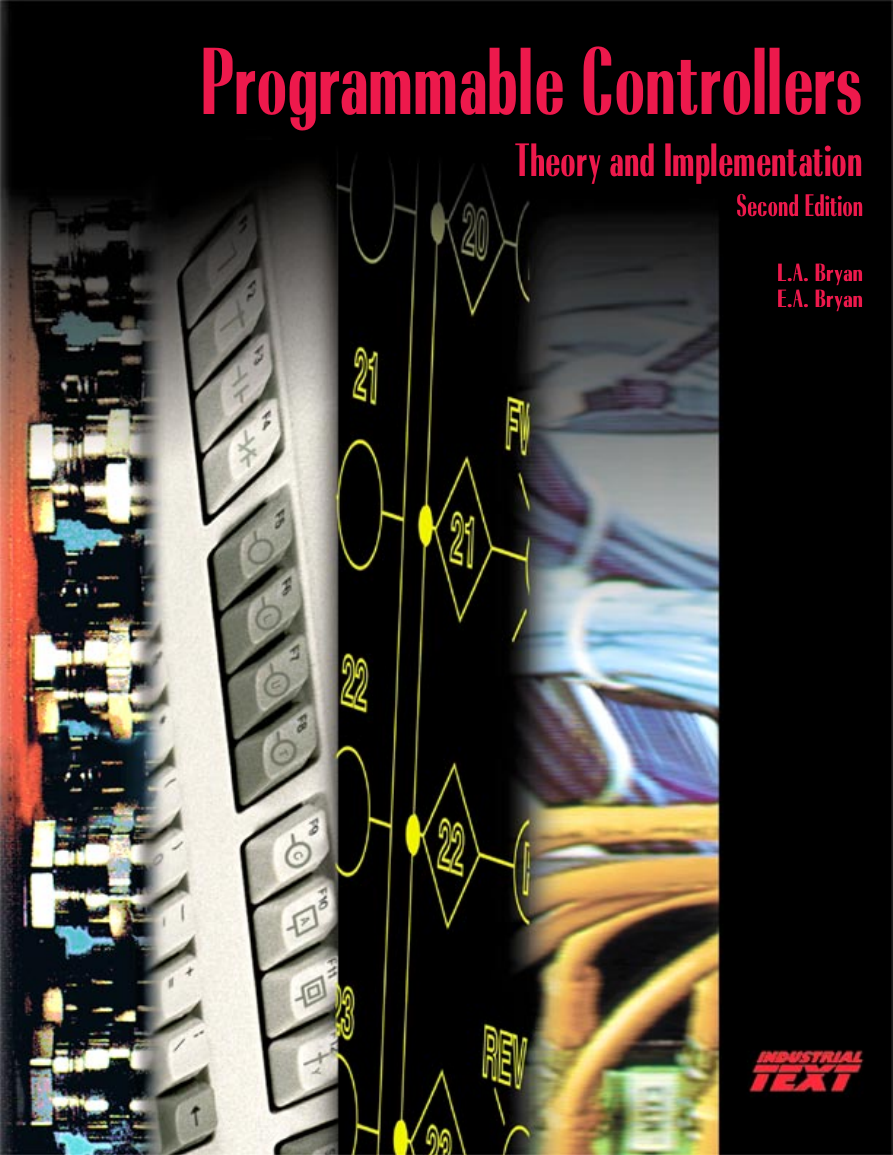
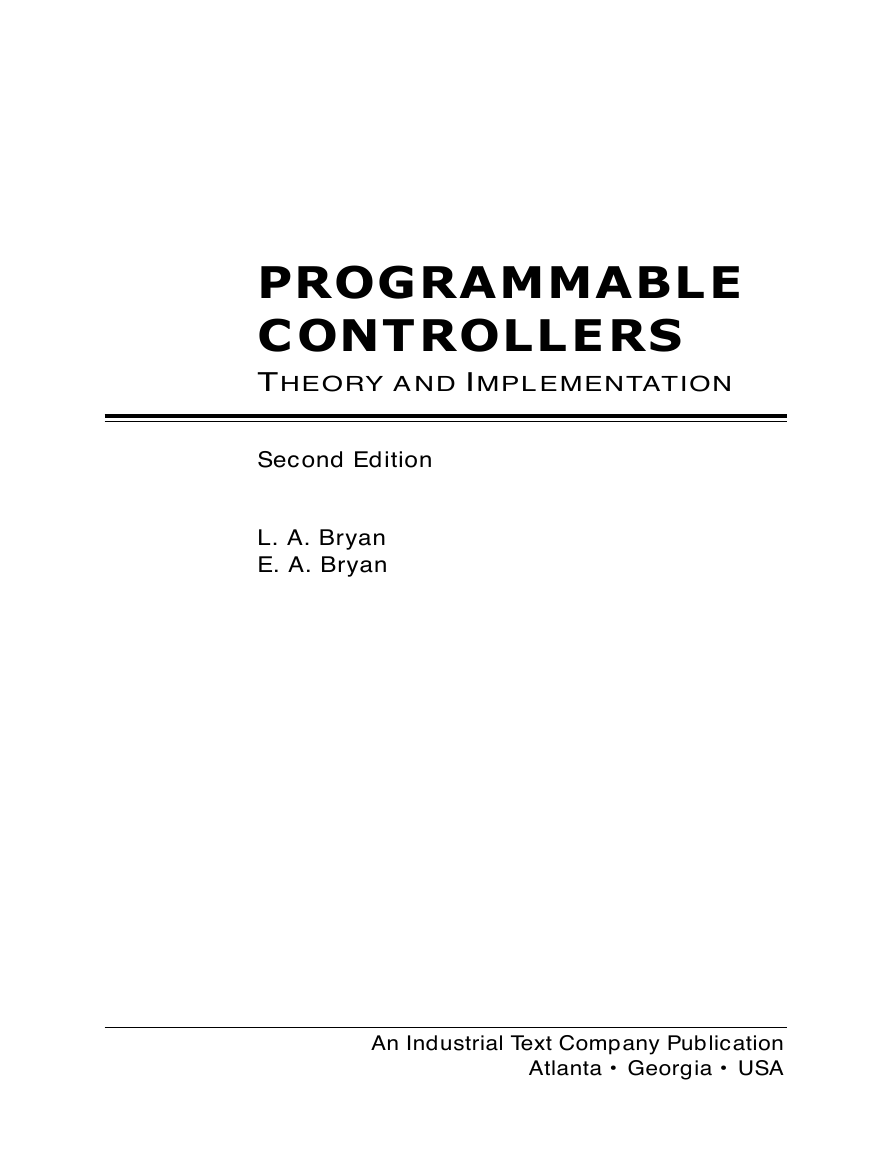
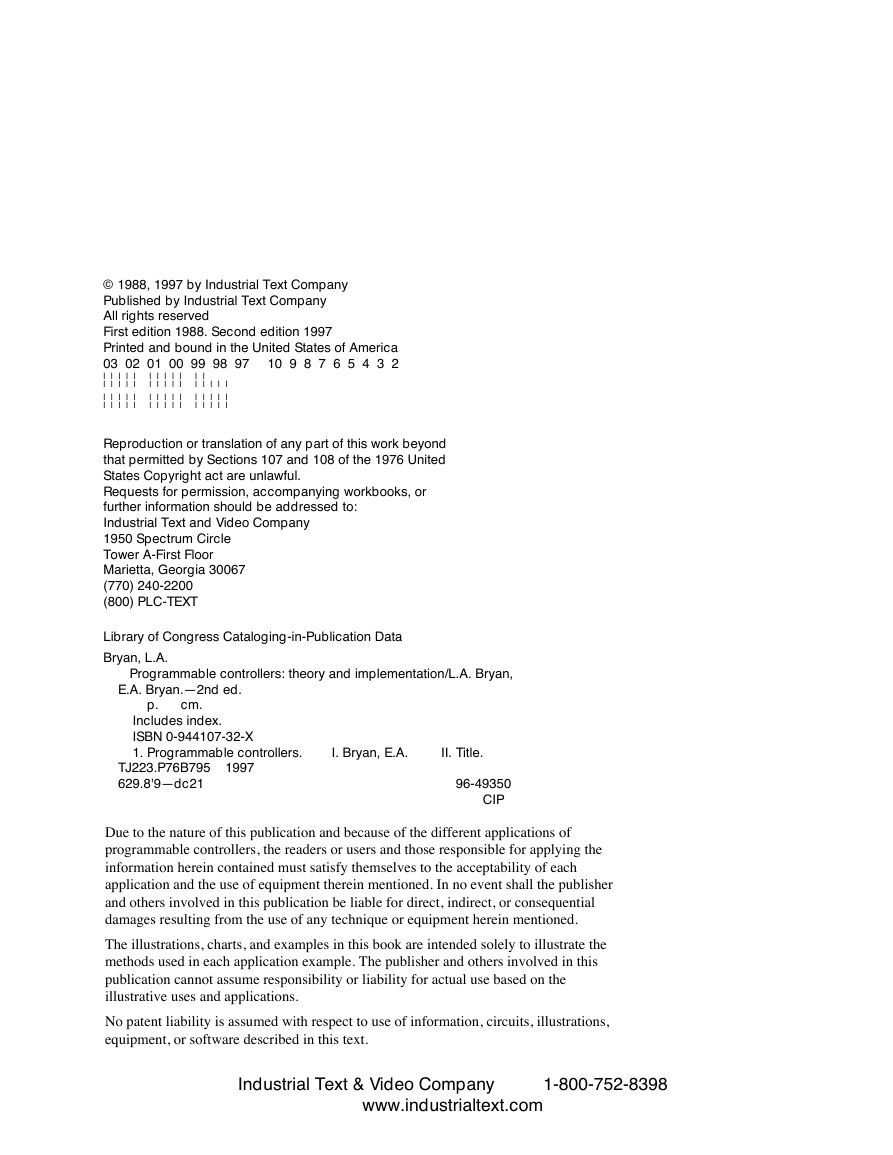
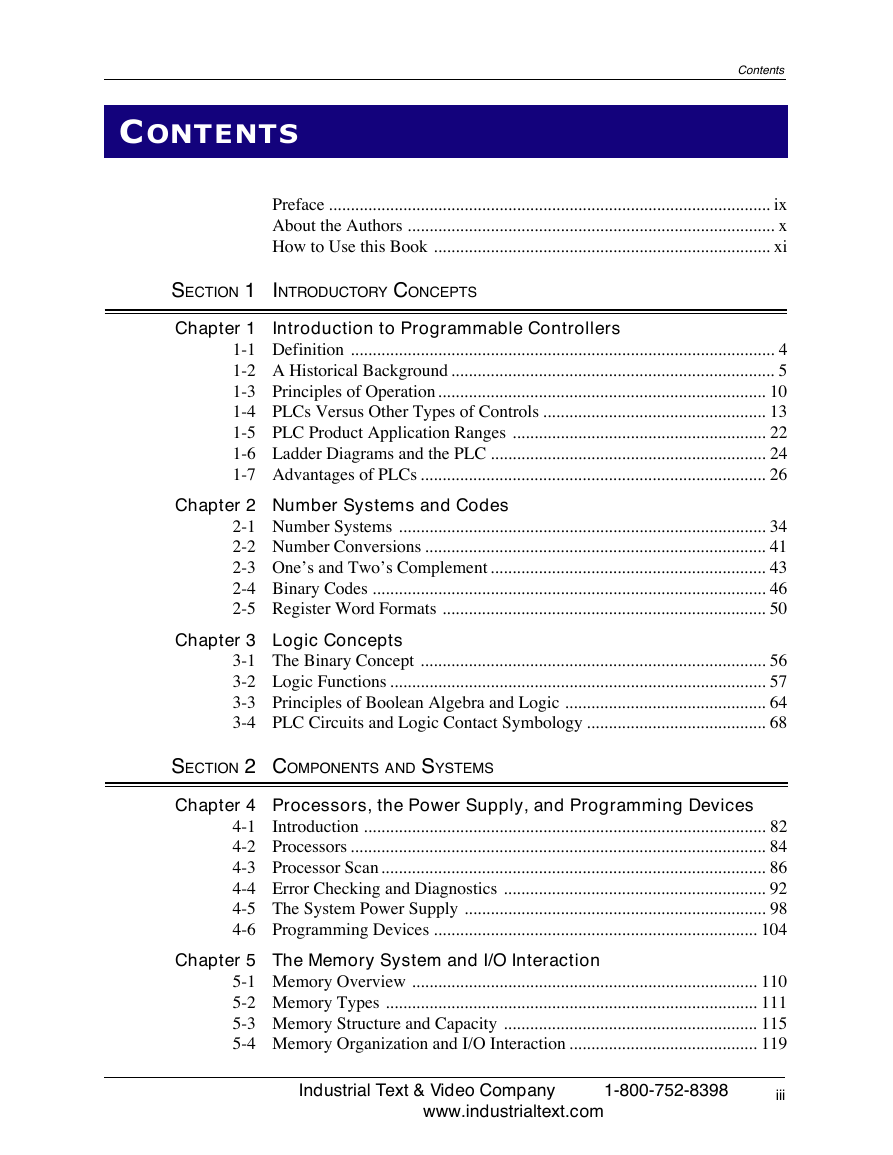
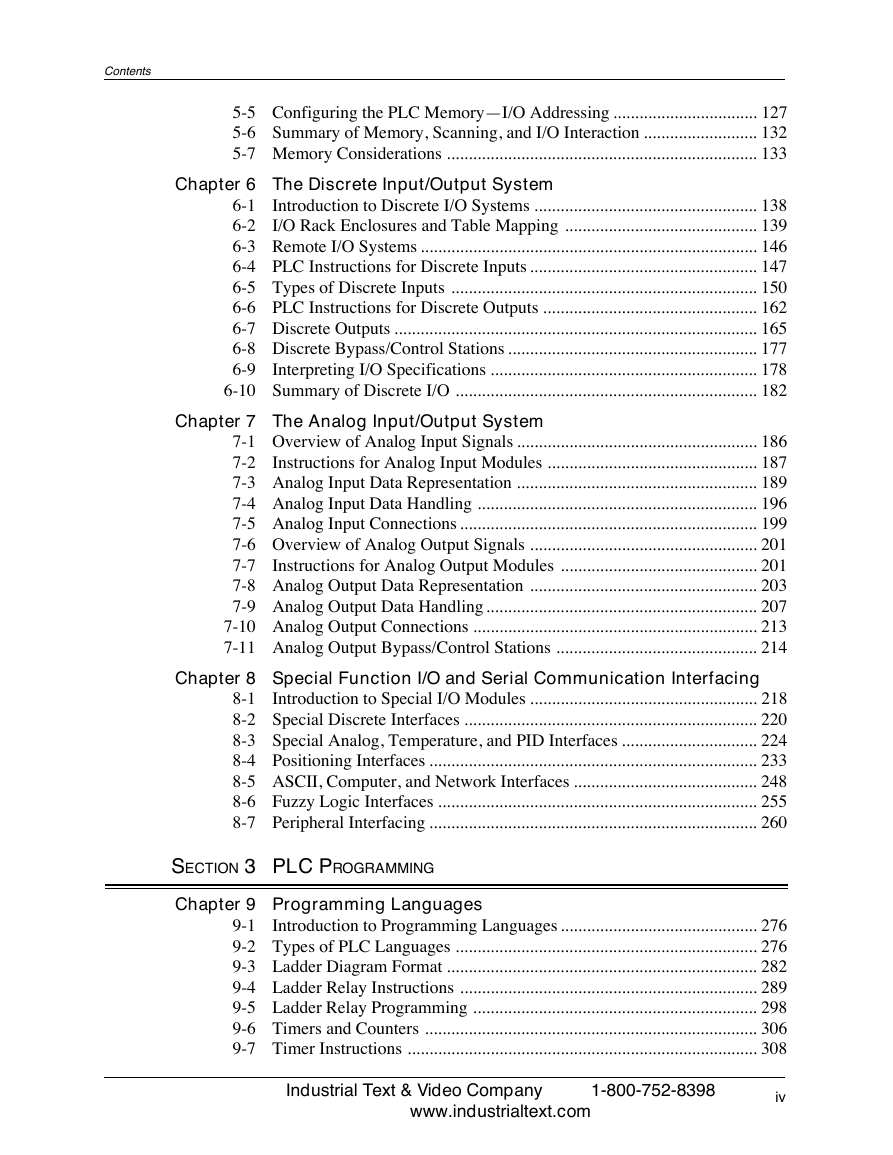
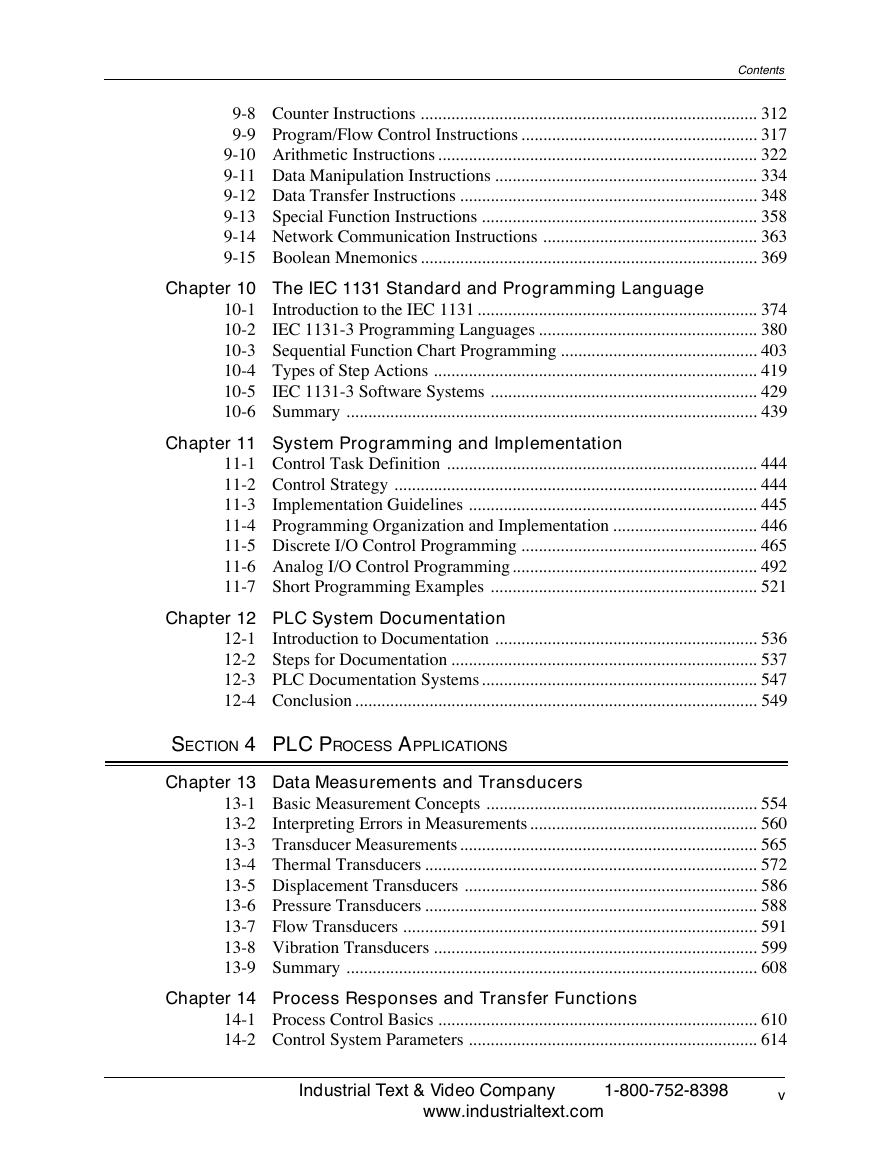
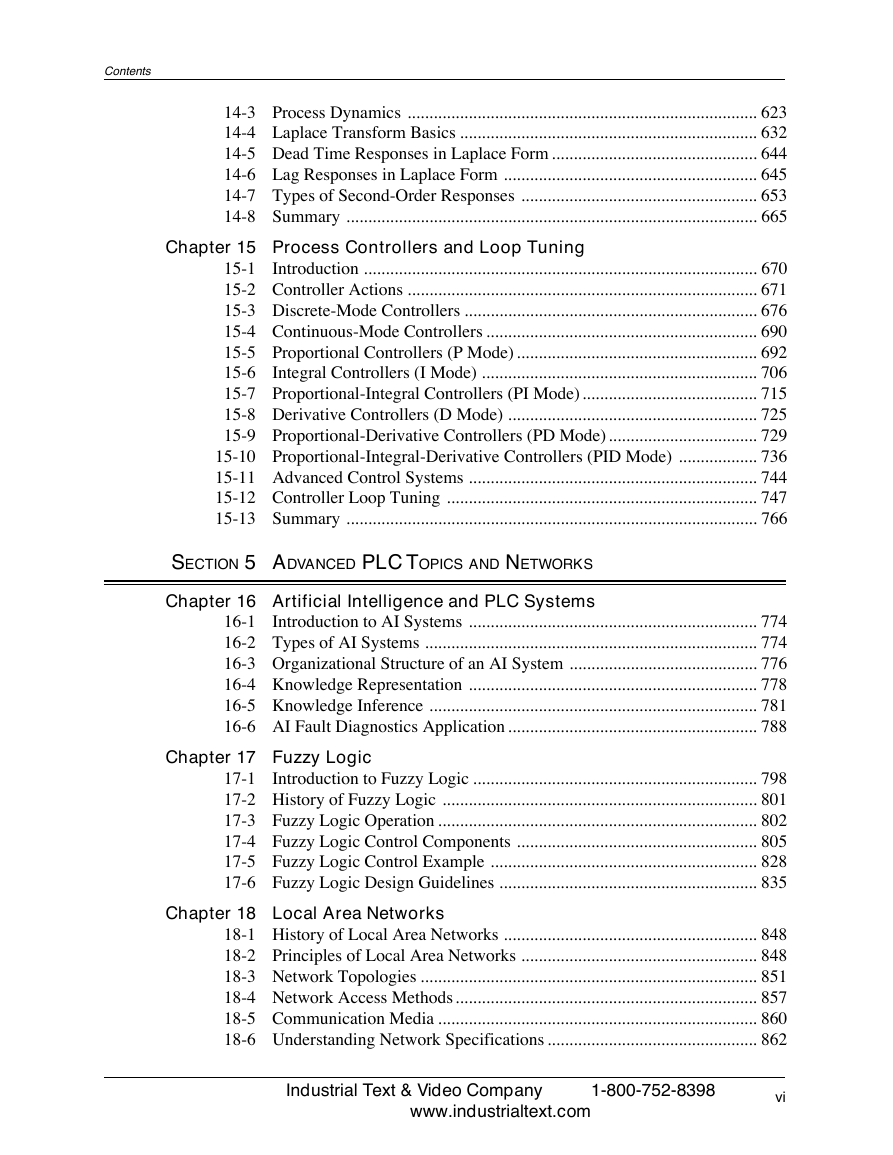
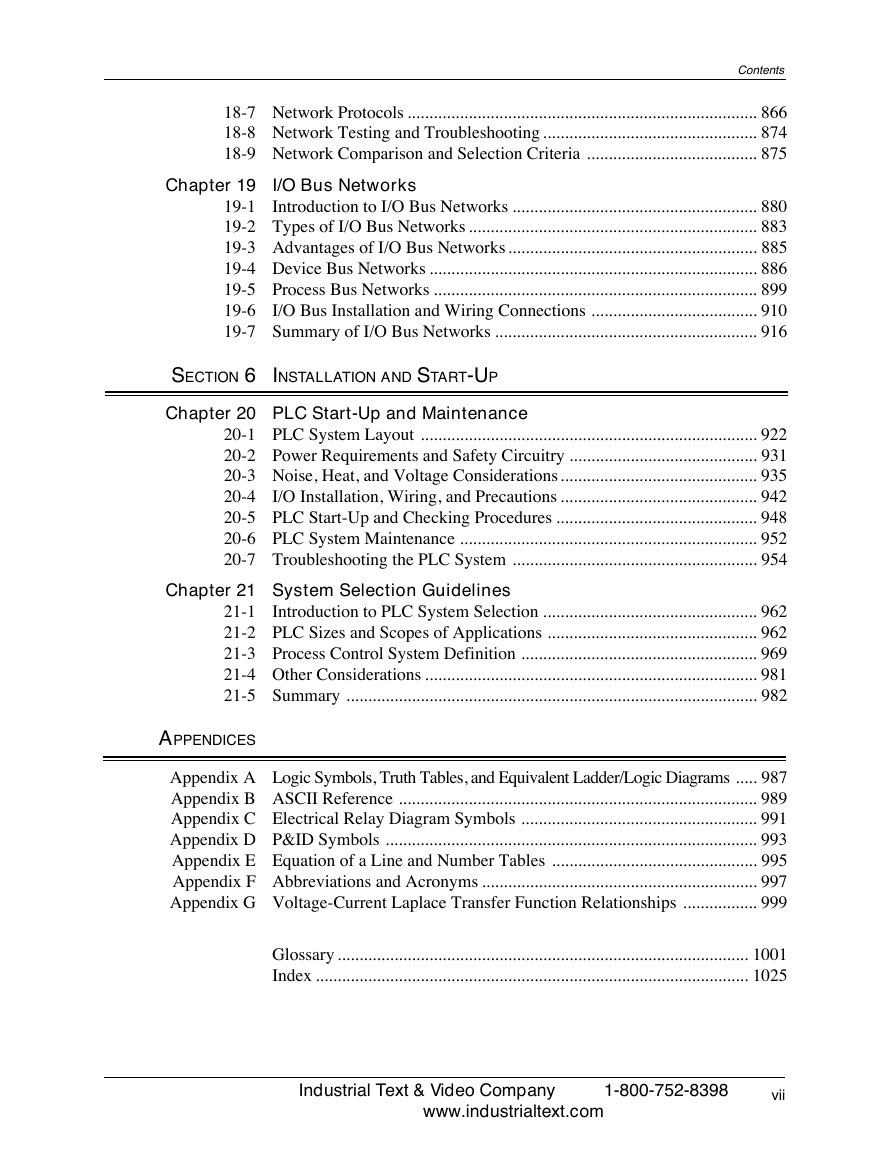








 2023年江西萍乡中考道德与法治真题及答案.doc
2023年江西萍乡中考道德与法治真题及答案.doc 2012年重庆南川中考生物真题及答案.doc
2012年重庆南川中考生物真题及答案.doc 2013年江西师范大学地理学综合及文艺理论基础考研真题.doc
2013年江西师范大学地理学综合及文艺理论基础考研真题.doc 2020年四川甘孜小升初语文真题及答案I卷.doc
2020年四川甘孜小升初语文真题及答案I卷.doc 2020年注册岩土工程师专业基础考试真题及答案.doc
2020年注册岩土工程师专业基础考试真题及答案.doc 2023-2024学年福建省厦门市九年级上学期数学月考试题及答案.doc
2023-2024学年福建省厦门市九年级上学期数学月考试题及答案.doc 2021-2022学年辽宁省沈阳市大东区九年级上学期语文期末试题及答案.doc
2021-2022学年辽宁省沈阳市大东区九年级上学期语文期末试题及答案.doc 2022-2023学年北京东城区初三第一学期物理期末试卷及答案.doc
2022-2023学年北京东城区初三第一学期物理期末试卷及答案.doc 2018上半年江西教师资格初中地理学科知识与教学能力真题及答案.doc
2018上半年江西教师资格初中地理学科知识与教学能力真题及答案.doc 2012年河北国家公务员申论考试真题及答案-省级.doc
2012年河北国家公务员申论考试真题及答案-省级.doc 2020-2021学年江苏省扬州市江都区邵樊片九年级上学期数学第一次质量检测试题及答案.doc
2020-2021学年江苏省扬州市江都区邵樊片九年级上学期数学第一次质量检测试题及答案.doc 2022下半年黑龙江教师资格证中学综合素质真题及答案.doc
2022下半年黑龙江教师资格证中学综合素质真题及答案.doc